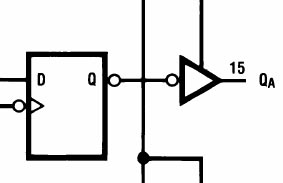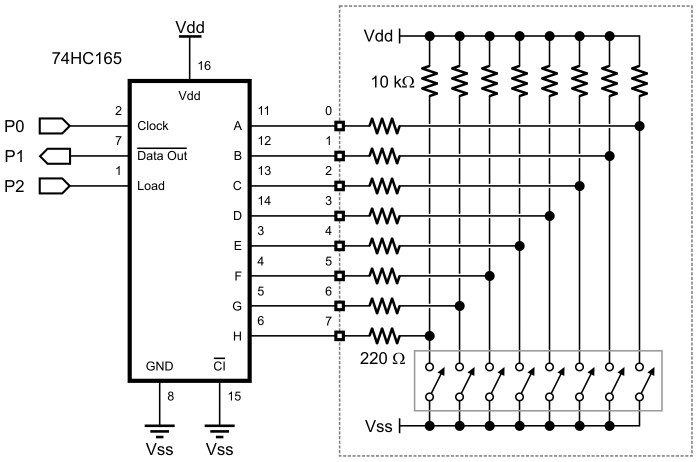

- #74HC165 HARDWARE SPI ATMEGA HOW TO#
- #74HC165 HARDWARE SPI ATMEGA SERIAL#
- #74HC165 HARDWARE SPI ATMEGA SERIES#
If you only need additional digital inputs for your project, the low-cost standard 7400 series 74HC165 IC is a good choice to incorporate into your design.


#74HC165 HARDWARE SPI ATMEGA HOW TO#
The All About Circuit’s Understanding Schematics, SparkFun’s How to Read a Schematic, Core Electronics’ How to Use Breadboards, and Science Buddies’ How to Use a Breadboard guides are good resources for learning how to translate a schematic to a breadboard. In addition, this tutorial will use a solderless breadboard to build a circuit from a schematic diagram. If you are new to Arduino, or would just like to refresh your knowledge, please see our Blink: Making An LED Blink On An Arduino Uno tutorial before proceeding with this one.
#74HC165 HARDWARE SPI ATMEGA SERIAL#
Part 3 – The MCP23017 will describe how to add both digital inputs and outputs using the MCP23017 16-Bit I2C I/O Expander With Serial Interface IC.Ī basic understanding of electronics and programming is expected along with some familiarity with the Arduino platform. Part 2 – The 74HC165 (currently reading) describes how to add digital inputs using the 74HC165 8-bit parallel-in serial-out (PISO) shift register IC. Part 1 – The 74HC595 described how to add digital outputs using the 74HC595 8-bit serial-in parallel-out (SIPO) shift register IC. Each part focuses on a specific integrated circuit (IC) chip. This three-part tutorial teaches you how to add more digital inputs and outputs to your Arduino development board. some displays, or your project uses many discrete sensors and/or actuators. This often happens when you connect to components that require a lot of pins for their interface, e.g. Sometimes, a project needs more digital I/O than what is available on your Arduino board. Reading All Inputs Using Defined Names And Bit Operations.Reading Single Inputs Using Familiar digitalRead() Functionality.Skill Level: Intermediate Table Of Contents


 0 kommentar(er)
0 kommentar(er)
